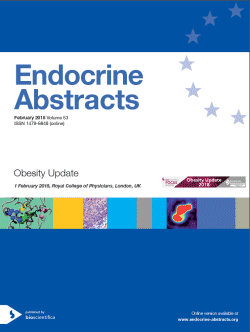The acute effects of propionate on resting energy expenditure and fat oxidation in healthy human volunteers
Aspey Karen , Chambers Edward , Frost Gary
Predictive value of distress tolerance measures in successful weight loss
Thompson-Lake Daisy , O'Byrne Emma , Garza II Richard De La , Hajek Peter
Clinical effectiveness of SGLT2-I in combination with GLP-1 agonists as alternative or adjunct to bariatric surgery in type 2 diabetes mellitus
Samarasinghe Suhaniya , Hickling Sophie , Lyttle Camilla , Feher Micheal , Greener Veronica
Impact of a diabetes specialist nurse in a tier 3 specialist weight managment service on improvement on weight and glycemic control
Goodman Stephanie , Arutchelvam Vijayaraman
Extreme weight loss post-gastric bypass in a recently diagnosed diabetic – the honeymoon trap
Philbey Christopher , Mohammed Kamrudeen
Our experience in managing disabling hypoglycaemia post-gastric bypass surgery
Hanafy Ahmed , Mohammad Misbah , Haridass Sabari Anand , Rajeswaran Chinnadorai
The use of ketogenic diet in a patient with post-prandial hyperinsulinemic hypoglycaemia after m Roux-en-Y Gastric Bypass surgery: a case study
Abbott Sally , Dindol Naomi , Singhal Rishi , Helmy Ahmed , Ahmed Mohamed , Bellary Sri , Tahrani Abd
Persistant hypoglycaemia post bariatric surgery
Glyn Tessa , Greenslade Beth , Andrews Robert




